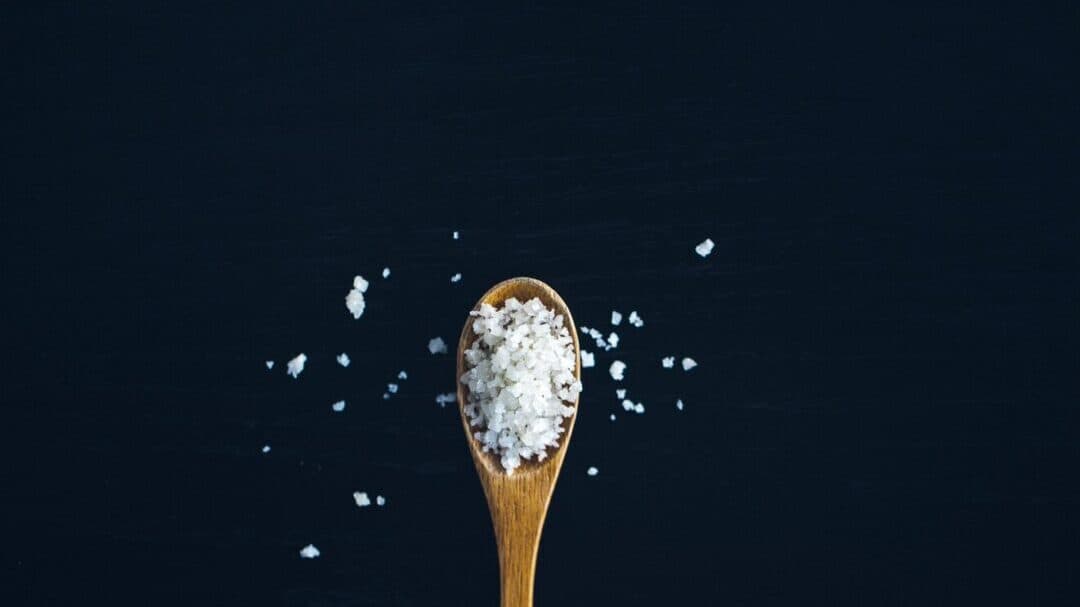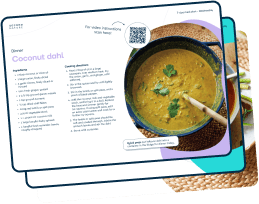We’re often told that overeating salt is bad for our health and that we should all eat a low-sodium diet. Salt consumption has been linked to high blood pressure, heart disease, heart failure, and strokes.
Government organisations and national campaigns have set recommended salt targets to help us to reduce our daily salt intake; food labels are awash with information on their ‘low-sodium levels’.
However, these recommendations have been challenged by some scientists who say that salt isn’t as bad as we’re led to believe.
Many negative associations with high salt intake are less to do with salt and are more related to unhealthy, processed foods such as crisps, pizza, and hotdogs, which contain large amounts of salt.
This guide will examine why salt is essential to a healthy diet and doesn’t need to be avoided altogether.
Medication-assisted weight loss with a future focus
Start with Wegovy or Mounjaro, transition to habit-based health with our support


What is salt?
Salt is added to foods for flavour and preservation. Table salt is most commonly used in households, and it’s made from sodium (40%) and chloride (60%). (The technical term for table salt is sodium chloride.)
Both sodium and chloride are essential minerals for a healthy diet. They play an important role in the contraction and relaxation of muscles and the conduction of nerve signals.
They also help our bodies to sustain a healthy balance of minerals and water. Therefore, having too little salt in the diet can lead to health problems.
Key points:
- Salt is used to add taste and flavour to foods. It’s also a food preservative.
- Table salt is made from 40% sodium and 60% chloride.
- Sodium and chloride are essential minerals, vital for our health.
What are the national guidelines around salt?
The World Health Organisation (WHO) currently recommends that we eat no more than 5g of salt each day, and the UK Government recommends no more than 6g (one teaspoon) per day.
The national guidelines are in place because they believe sodium raises blood pressure, which they say is a risk factor for heart disease.
However, as we’ll discuss later, this notion is based on weak scientific evidence, mainly from observational studies (which can’t prove causation). The WHO salt targets were based on results from the INTERSALT study.
This epidemiological study (a type of observational study that investigates the distribution, patterns, and causes of diseases in populations) examined relationships between the amount of sodium in diets and blood pressure in over 10,000 people across 32 countries.
Results showed that blood pressure increased by 3-6 mmHg (systolic) and 0-3 mmHg (diastolic) for every additional teaspoon of salt consumed. Targets were based on these findings, even though the increases in blood pressure were very small.
Experts argue that epidemiological studies involving multiple countries shouldn’t have been used to draw solid conclusions and set worldwide targets as they don’t consider genetic, cultural, and environmental differences.
Key points:
- National guidelines suggest restricting our sodium intake and consuming no more than 6g (one teaspoon) of salt a day.
- However, these recommendations are based on weak scientific evidence, which is mainly based on findings from observational studies (which can’t prove causation).
The science behind salt and health
Salt and blood pressure
Several observational studies have suggested that salt levels in the diet influence blood pressure. However, observational studies can, at best, suggest an association between dietary salt intake and blood pressure.
Higher-quality studies (known as Cochrane reviews)
have shown a low salt diet (between 4-6g of salt per day) is effective in lowering blood pressure in people with high blood pressure (hypertension).
However, the effects are much smaller in people with normal blood pressure. Blood pressure is reduced by as little as 1-2 mmHg in healthy people, which is not a clinically significant amount. Therefore, reducing salt won’t help everyone lower their blood pressure.
Some people are, however, more susceptible to the blood pressure-raising effects of salt, perhaps due to genetics and other factors.
These people are ‘salt-sensitive’, and dietary salt restrictions tend to be more effective in these individuals. It’s estimated that around 51% of people with high blood pressure and 26% of healthy people are ‘salt-sensitive’.
DASH (dietary approaches to stop hypertension) has become a popular dietary approach for hypertension. This way of eating includes foods rich in potassium, calcium, and magnesium and limits foods high in salt, saturated fat, sugar, and alcohol.
An extensive and recent review concluded that the DASH diet reduces blood pressure by a small amount. However, experts argue that the reductions in blood pressure are not due to the salt itself but other beneficial dietary aspects (i.e. increased fruits and vegetables and whole grains).
Put together, reducing dietary salt intake is unlikely to significantly impact reducing blood pressure in healthy people. However, it may help a minority of salt-sensitive individuals.
However, this isn’t reflected in national guidance, which has applied a “one size fits all” approach to salt recommendations by telling us all that we need to cut down.
Key points:
- Dietary salt reductions lower blood pressure in healthy people, but only by small amounts.
- Dietary salt reductions have a greater effect on lowering blood pressure in people who are salt-sensitive.
- National guidance has applied a “one size fits all” approach to salt recommendations, despite everyone responding differently to salt.
Salt and heart disease
Although salt may affect blood pressure in certain populations, it’s unclear whether reducing the amount of salt in the diet lowers the overall risk of heart disease, stroke, or related deaths.
Some studies have shown a reduction in deaths from cardiovascular disease (heart disease and stroke), whereas others have found little effect. These discrepancies could be partly due to differences in salt measurement and study populations.
A combined study of over 3,000 people showed that cardiovascular events were lower in people following a low-salt diet for up to a year compared with those on their regular diet.
The researchers concluded that people on the low salt diet had a 30% lower incidence of cardiovascular events 10-15 years later. It should be noted, however, that this study had three significant limitations.
Firstly, dietary salt levels weren’t controlled in the low salt group, which could have affected the accuracy of the results. Secondly, the salt intake for participants in the regular diet group wasn’t measured. Finally, the intervention was done over a year, with follow-up data collected 10-15 years later.
Cardiovascular events occurring many years later could have been influenced by other factors (i.e. diet, exercise, smoking) after the initial intervention.
Interestingly, a high-quality Cochrane review (which analysed eight primary salt and cardiovascular disease studies) found no evidence that salt reductions reduced cardiovascular events.
Whilst dietary advice and salt substitutes reduced the amount of salt eaten; this didn’t lead to any clinically significant reductions in heart attacks, strokes, or death.
Key points:
- Studies investigating the effects of salt on cardiovascular health have produced inconsistent results.
- It’s unclear whether dietary salt targets help to reduce the overall risk of heart disease, stroke, or related deaths.
Should we reduce our salt intake?
The short answer to this is no. Cutting down on the amount of salt we eat could be helpful for a minority of people, such as salt-sensitive individuals. But for healthy individuals, reducing salt intake is unlikely to significantly impact health and disease risk.
Salt is an essential component of a healthy diet. Many of the negative associations with salt are less to do with salt itself and more related to unhealthy, ultra-processed salty foods such as crisps, hamburgers, and pizzas (which happen to contain lots of salt).
Unprocessed foods such as whole grains, fish, high-quality meat and poultry, and fruits and vegetables naturally contain less salt than manufactured or processed foods.
Therefore, adding a pinch of salt to your meals at the table or during cooking is OK to enhance the taste and flavour.
People following a low carbohydrate diet, in particular, don’t need to be concerned about the amount of salt in their diet. When you eat fewer carbohydrates, this has a diuretic effect on the kidneys.
This means that more salts and minerals are lost through urine. Too little salt in the body could result in side effects such as headaches, leg cramps and dizziness. Ensuring you have sufficient salt in your diet should minimise the risk of these side effects.
Key points:
- Most healthy individuals don’t need to cut down on salt.
- Cutting down on salt could be useful for a minority of people such as salt-sensitive individuals.
- Lower carb eating plans can result in loss of salts through urine, so ensuring there’s enough salt in the diet is important to minimise side effects such as headaches.
Where is salt found in our diets?
It’s important to note that salt isn’t inherently bad. As we’ve mentioned previously, we need some salt in our diets to maintain general health.
However, for healthy individuals, reducing salt intake is unlikely to significantly impact health and disease risk.
Salt is found in almost every food that we eat in varying amounts. Fruit and vegetables, for example, naturally contain very low amounts of salt. Whereas manufactured foods, such as bread, ready meals, and sauces, can contain high amounts of salt.
Salt is often added to popular processed foods and everyday products to enhance the taste. Some examples can be seen in the table below (brands vary):
| Food | Portion Size | Salt (g) |
| Soy sauce | 1 Tbsp | 3.38 |
| Grilled bacon | 2 rashers | 2.84 |
| Crumpet | 2 crumpets | 2 |
| Instant noodles | 1 pot | 4.5 |
| Baked beans | 1/2 a tin (200g) | 2.5 |
We generally don’t need to worry about salt added to food during cooking and at the table as this makes up only around 20% of our salt intake.
The remaining 80% comes from processed and manufactured foods. The UK National Diet and Nutrition Survey (NDNS) showed that the primary sources of salt in the UK diet are cereals and processed meat products.
Key points:
- Salt is found in almost every food and isn’t inherently bad.
- We generally don’t need to worry about salt added to food during cooking and at the table as this makes up just 20% of our salt intake.
- Instead, we should focus on eating less unhealthy, processed foods, which simply happen to be high in salt and account for 80% of our salt intake.
Take home message
- Despite fears that salt is bad for us, it’s an integral part of a healthy diet and isn’t inherently bad on its own.
- National recommendations for salt targets are based on weak evidence, mainly observational (which doesn’t prove causation).
- There is some evidence that reducing salt intake may help to lower blood pressure by a small amount, but this is mainly in salt-sensitive individuals.
- For healthy individuals, reducing salt intake is unlikely to significantly impact health and disease risk.
- The evidence for salt and heart disease is conflicting, so no conclusions can be drawn.
- Many negative associations with salt are related to unhealthy, ultra-processed foods (e.g. crisps, pizza, or instant noodles) rather than salt itself.
- Lower carb eating plans can result in loss of salts through urine, so ensuring enough salt in the diet is essential to minimise side effects.
- If you’re mainly cooking from scratch and using whole foods, adding a pinch of salt to your meals to enhance the flavour is fine.


